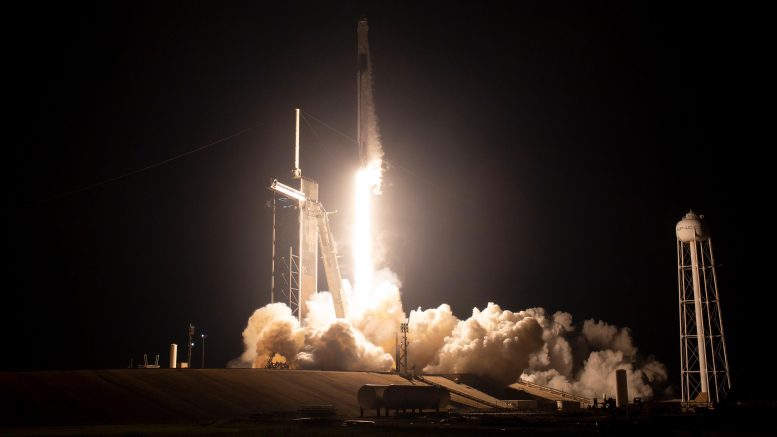
A SpaceX Falcon 9 rocket lifts off the pad at Launch Complex 39A at 12:34 a.m. EST on March 2, 2023, carrying the Dragon spacecraft Endeavour for NASA’s Crew-6 mission to the International Space Station. Aboard Dragon are NASA astronauts, Stephen Bowen, spacecraft commander, and Warren Hoburg, pilot, along with mission specialists Sultan Alneyadi, UAE (United Arab Emirates) astronaut, and Andrey Fedyaev, Roscosmos cosmonaut. Credit: NASA
Crew members assigned to NASA’s SpaceX Crew-6 mission are in orbit following their successful launch to the International Space Station (ISS) at 12:34 a.m. EST Thursday from Launch Complex 39A at NASA’s Kennedy Space Center in Florida. The international crew is the agency’s sixth commercial crew rotation mission with SpaceX aboard the orbital laboratory.
A SpaceX Falcon 9 rocket propelled the Dragon spacecraft, named Endeavour, into orbit carrying NASA astronauts Stephen Bowen and Warren Hoburg, along with United Arab Emirates (UAE) astronaut Sultan Alneyadi and Roscosmos cosmonaut Andrey Fedyaev, for a science expedition aboard the space station.
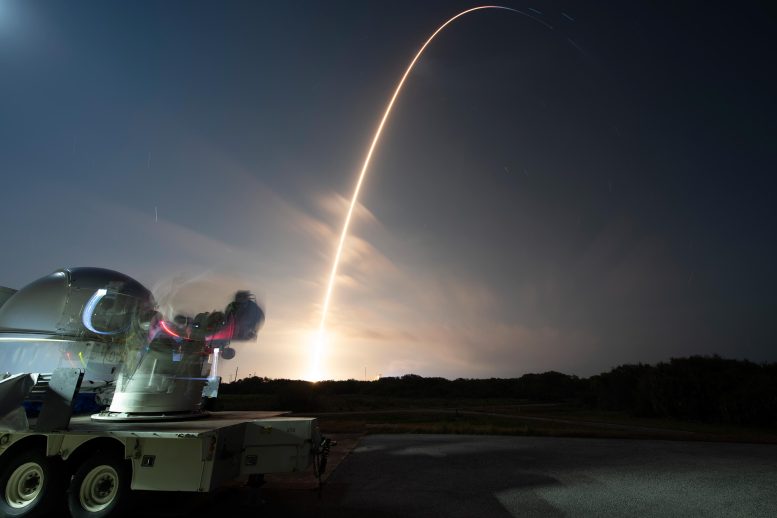
A SpaceX Falcon 9 rocket soars upward after liftoff from the pad at Launch Complex 39A at 12:34 a.m. EST on March 2, 2023, carrying the Dragon spacecraft Endeavour for NASA’s Crew-6 mission to the International Space Station. Credit: NASA/Kevin Davis
“Congratulations to the NASA and SpaceX teams for another history-making mission to the International Space Station! The Commercial Crew Program is proof American ingenuity and leadership in space benefits all of humanity – through groundbreaking science, innovative technology, and newfound partnership,” said NASA Administrator Bill Nelson. “Crew-6 will be busy aboard the International Space Station, conducting over 200 experiments that will help us to prepare for missions to the Moon, Mars, and beyond, as well as improve life here on Earth. We look forward to seeing all that they accomplish.”
During Dragon’s flight, SpaceX will monitor a series of automatic spacecraft maneuvers from its mission control center in Hawthorne, California, and NASA teams will monitor space station operations throughout the flight from the Mission Control Center at the agency’s Johnson Space Center in Houston.
Dragon will dock autonomously to the space-facing port of the station’s Harmony module around 1:17 a.m., Friday, March 3. NASA Television, the NASA app, and the agency’s website will provide live coverage of docking and hatch opening. NASA TV also will cover the ceremony to welcome the crew aboard the orbital outpost about 3:40 a.m.
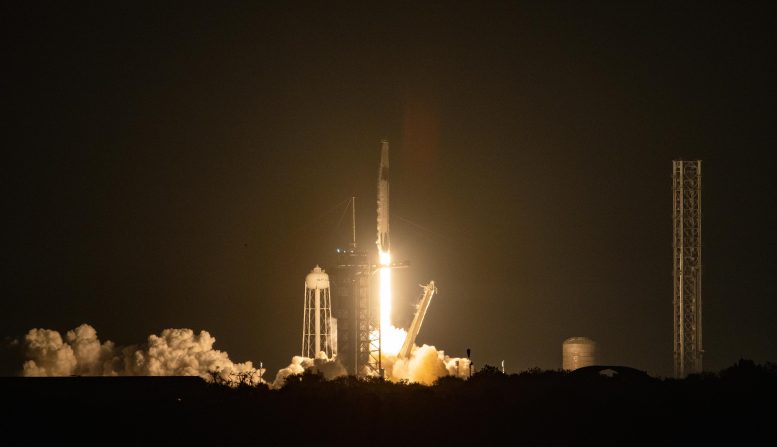
A SpaceX Falcon 9 rocket lifts off the pad at Launch Complex 39A at 12:34 a.m. EST on March 2, 2023, carrying the Dragon spacecraft Endeavour for NASA’s Crew-6 mission to the International Space Station. Aboard Dragon are NASA astronauts, Stephen Bowen, spacecraft commander, and Warren Hoburg, pilot, along with mission specialists Sultan Alneyadi, UAE (United Arab Emirates) astronaut, and Andrey Fedyaev, Roscosmos cosmonaut. Crew-6 is the sixth crew rotation mission with SpaceX to the station, and the seventh flight of Dragon with people as part of the agency’s Commercial Crew Program. Credit: NASA
Once aboard station, Crew-6 will join the Expedition 68, consisting of NASA astronauts Frank Rubio, Nicole Mann, and Josh Cassada, as well as JAXA (Japan Aerospace Exploration Agency) astronaut Koichi Wakata, and Roscosmos cosmonauts Sergey Prokopyev, Dmitri Petelin, and Anna Kikina. For a short time, the 11 crew members will live and work in space together until Crew-5 members Mann, Cassada, Wakata, and Kikina return to Earth a few days later.
Conducting new scientific research, Crew-6 will help prepare for human exploration beyond low-Earth orbit and benefit life on Earth. Experiments will include studies of how particular materials burn in microgravity, tissue chip research on heart, brain, and cartilage functions, and an investigation that will collect microbial samples from the outside of the space station. These are just some of the hundreds of science experiments and technology demonstrations that will take place during their mission.
“For more than two decades, humans have continuously lived and worked aboard the International Space Station,” said Kathryn Lueders, associate administrator for NASA’s Space Operations Mission Directorate in Washington. “Commercial Crew Program missions like Crew-6 are essential so we can continue to maximize the important research possible only in the space station’s unique microgravity environment. Congratulations to the NASA and SpaceX teams on a successful launch! I am looking forward to seeing the crew safely aboard the station.”
The Crew-6 mission enables NASA to maximize use of the space station, where astronauts have lived and worked continuously for more than 22 years testing technologies, performing science, and developing the skills needed to operate future commercial destinations in low-Earth orbit and explore farther from Earth. Research conducted on the space station provides benefits for people on Earth and paves the way for future long-duration trips to the Moon and beyond through NASA’s Artemis missions.
The first submarine officer ever selected to be a NASA astronaut, who flew on three space shuttle missions in less than two and a half years, is the commander of NASA’s SpaceX Crew-6 mission to the International Space Station. Meet Steve Bowen, a Massachusetts native and graduate of the U.S. Naval Academy, and hear him talk about his childhood and a Navy career that led to three construction trips to space (and seven spacewalks!), and his excitement about returning to the space station to take part in the science mission that is paving the way for future exploration beyond low Earth orbit. Credit: NASA
Meet Crew-6
This will be Bowen’s fourth trip into space as a veteran of three space shuttle missions: STS-126 in 2008, STS-132 in 2010, and STS-133 in 2011. Bowen has logged more than 40 days in space, including 47 hours, 18 minutes during seven spacewalks. As mission commander, he will be responsible for all phases of flight, from launch to re-entry. He will serve as an Expedition 68-69 flight engineer aboard the station.
Bowen was born in Cohasset, Massachusetts. He holds a bachelor’s degree in electrical engineering from the United States Naval Academy in Annapolis, Maryland, and a master’s degree in ocean engineering from the Joint Program in Applied Ocean Science and Engineering offered by the Massachusetts Institute of Technology (MIT) in Cambridge, Massachusetts, and Woods Hole Oceanographic Institution in Falmouth, Massachusetts. In July 2000, Bowen became the first submarine officer selected as an astronaut by NASA.
Teen model rocket maker. Rock climber and aircraft designer. MIT student and later professor. And now, pilot of NASA’s Crew-6 mission to the International Space Station. A childhood dream of flying in space is about to come true for Pennsylvania native Woody Hoburg; join him for a look at his incredible path of aeronautics and engineering and computer science and robotics – and time as an EMT with Yosemite Search and Rescue – that has brought him to a launch pad in Florida for the culmination of a dream of a lifetime. Credit: NASA
The mission will be Hoburg’s first flight since his selection as an astronaut in 2017. As pilot, he will be responsible for spacecraft systems and performance. Aboard the station, he will serve as an Expedition 68-69 flight engineer.
Hoburg is from Pittsburgh. He earned a bachelor’s degree in aeronautics and astronautics from MIT and a doctorate in electrical engineering and computer science from the University of California, Berkeley. At the time of his selection as an astronaut, Hoburg was an assistant professor of aeronautics and astronautics at MIT. Hoburg’s research focused on efficient methods for design of engineering systems. He also is a commercial pilot with instrument, single-engine, and multi-engine ratings.
Alneyadi will be making his first trip to space, representing the Mohammed bin Rashid Space Center of the UAE. Alneyadi is the first UAE astronaut to fly on a commercial spacecraft. Once aboard the station, he will become a flight engineer for Expedition 68-69.
Fedyaev will be making his first trip to space, and also will serve as a mission specialist, working to monitor the spacecraft during the dynamic launch and re-entry phases of flight. He will be a flight engineer for Expedition 68-69.



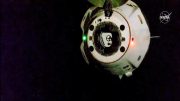
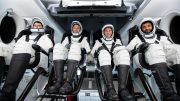

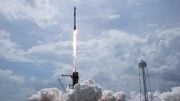
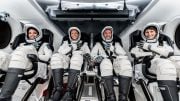
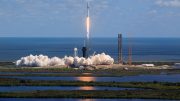
Be the first to comment on "Liftoff! NASA’s SpaceX Crew-6 Safely En Route to International Space Station"